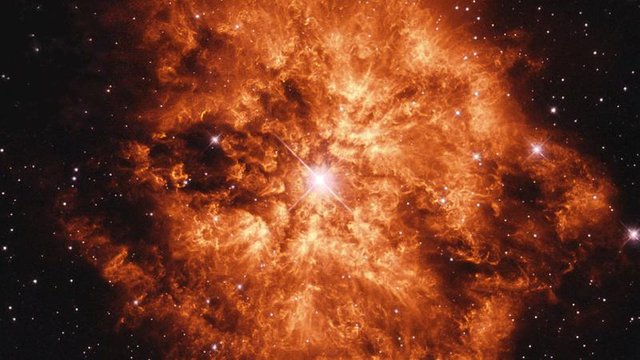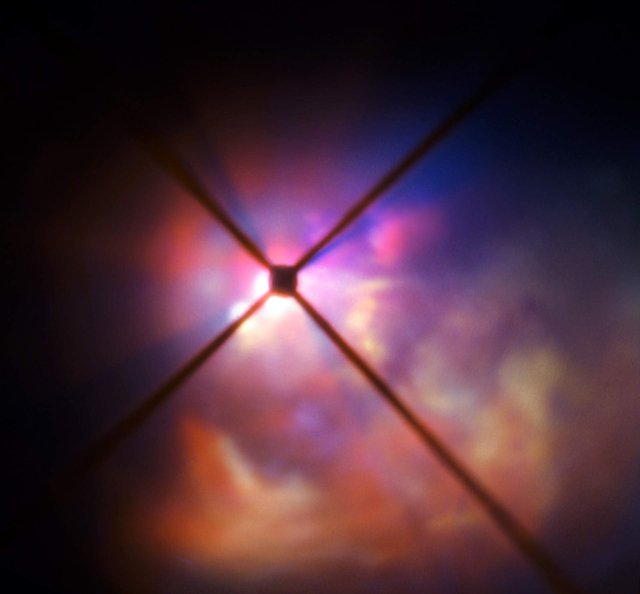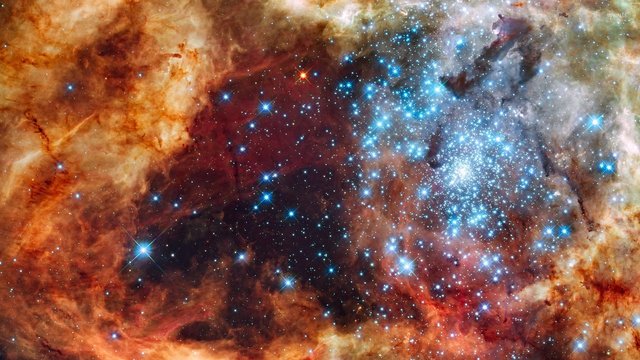Stars are violent, and I don't say that in the sense that they're aggressive, but rather they're incredibly extreme and unstable. They live around the idea of equilibrium, a constant state of balance in which the outward force of moving energy conflicts with the inward drag of gravity. These two opposing forces are at constant odds, with stars inflating and deflating to compensate for changes in energy and mass.
However, when it comes to instability and extremity, there's nothing that can rival the Wolf-Rayet star. A classification of Stars that yields some of the brightest, hottest, most massive and shortest lived stars in the universe.
Named after Astronomers Georges Rayet and Charles Wolf, these stars stuck out in observations for one glaring reason; they gave off very strong Helium emission bands. Stars are typically expected to mostly give off absorbtion bands with a few emissions of Hydrogen. This would make sense since Hydrogen is what lies on the surface of every star, or so we thought.

Hubble Legacy Archive, NASA, ESA
As it turns out, stars with Helium surfaces are a thing. And that can lead to some very difficult questions, like how does it happen in the first place?
It puzzled astronomers for a good while, as far as we were aware, all stars are formed of Hydrogen, so how do we end up with stars that, if we're thinking logically, would have practically no Hydrogen at all?
But like all conflicts there is a solution, actually there are a few solutions, which leads us into the categories of Wolf-Rayet stars. And while there are technically 3 Categories, I choose to ignore one of them, more on that later.
The first and most prominent of the categories is Population 1 WR stars, they have a rather bizarre way of forming in spite of being the most common way of WR's being created. To put it in the simplest terms; when a hypergiant star, that is a very massive and large star characterized by strong stellar winds and rapid mass loss, gets to a point in which the mass being blown away from it is rushing away incredibly fast, the entire outer envelope of hydrogen is capable of flying away from the star's surface.
Imagine such a star as being somewhat akin to an onion in structure, where layers of material are separated as you go inwards. For a hypergiant that is losing mass at this rate, the outer layer and pretty much most of the star will be Hydrogen, however the core is currently fusing Helium into heavier elements like Carbon and Oxygen, with a large layer of Helium not being fused resting above said core.
Due to the star's incredible mass, its fusion will accelerate to ridiculous rates when it begins burning Helium. This sudden increase in energy output causes the rapid expansion of the star, which is nothing unusual, it's what practically all stars that ever get to burn Helium will do, including our sun. However for the sun, this phase will be characterized by steady expansion to compensate for extra radiation pressure from the core, and a bit of mass loss in the process. The defining feature in the hypergiant's case is that the entire outer layer is lost in one large swell.
Losing that outer layer of Hydrogen reveals a new looking star inside, one that is much smaller, and a bit less massive, but a lot hotter. And boom, a population 1 Wolf-rayet star has been created.

ESO, Very Large Telescope
The image above effectively shows us what the process that creates these stars looks like, being the graph block lies Vy Canis Majoris, a Hypergiant that is believed to be actively shedding its outer Hydrogen to form a Wolf-Rayet star.
Following this, the WNh category steps in as a more extreme version of the previous example. Rather than transforming themselves from former Hypergiant stars, these stars have overwhelming amounts of radiation pressure pouring out from there cores and as result will go through an early photo-evaporation phase where the outer layers are blown away from the start, without ever needing to enter the Helium burning phase.
As you may expect, said stars are among the most energetic in the universe. Their initial mass is often in the range of 180+ solar masses, which bear in mind is the initial mass following the loss of an outer Hydrogen envelope. They are the most massive, luminous, and hottest stars in the universe.
And this violent lifestyle comes with some pretty significant ramifications, such as the fact that these star die very young, and not just because they burn through their material quickly. It also relates to how they die, not in the core collapse of a typical high mass star, not even through pair instability which it what would occur in a 100-180 initial mass star. Rather these stars die through a process of photodisintegration. Where pair instability supernovae involve overwhelming a star's core with energy and causing the resistance to its collapse to destabilize, photodisintegration supernovae happen when a star puts out so much energy when it starts fusing heavier elements that the atoms themselves lose their stability and rapidly shed off energy straight from their nuclei.

NASA, Hubble
I've used this image before when discussing star clusters, as in fact, the collection of stars seen to the center right is considered a cluster, but it is a rather special one. The R136 cluster lies in the heart of the Tarantula Nebula, the largest star factory known. It is also one of the most active star forming regions in the local group of galaxies and it has forged some of the most powerful stars ever seen. Almost every blue star featured in the image has at least 70 solar masses, and in the bright central region lies a monster of a star known as R136a1. It's the most massive and luminous star ever found, and it's darn close to being the hottest as well, just behind Melnick 34, which lies in the very same cluster as one of the brightest stars in the image, also a crazy massive and luminous star.
Of the roughly 3000 stars that make up the cluster, 8 lie above the 180 mass marker, while another 120 are currently wolf-rayet stars, with most of the remaining stars destined to become wolf-rayet's at some point in time. You can clearly see a red hypergiant in the upper central area, this star is destined to form a Wolf-Rayet in the future. Nearly a Fifth of all WR's known sit within this image.
Now in case you were wondering, the third class of WR's is known as the CSPN class, however, the truth is these so called "stars" are actually white dwarfs, remnants of dead stars which are surrounded by energized gas shed off in the stars last moments.
Unfortunately though, Wolf rayet stars are so rare that the nearest one is still over 1000 light years away. It's a fairly bright naked eye star at around 32nd place, commonly called Regor, it lies in the southern hemisphere constellation of Vela.
It's somewhat ironic really, Wolf-Rayet stars have the highest average luminosity's of the universe, R136a1 is the brightest known star, and WR25 is the single brightest star here in the milky way, and obviously as the name suggest, it too is a wolf-rayet. Yet from here on Earth, none of these monster stars will ever be anything more than tiny blips in the sky, mostly to far to be seen by eye and otherwise mistakable for any other close dim star to the average observer. So next time you look up at the night sky, just remember that any given star, dim or bright, could very well be a cosmic beast, absolutely giant in size or perhaps unfathomably hot of their surface, it's really amazing what's out there.